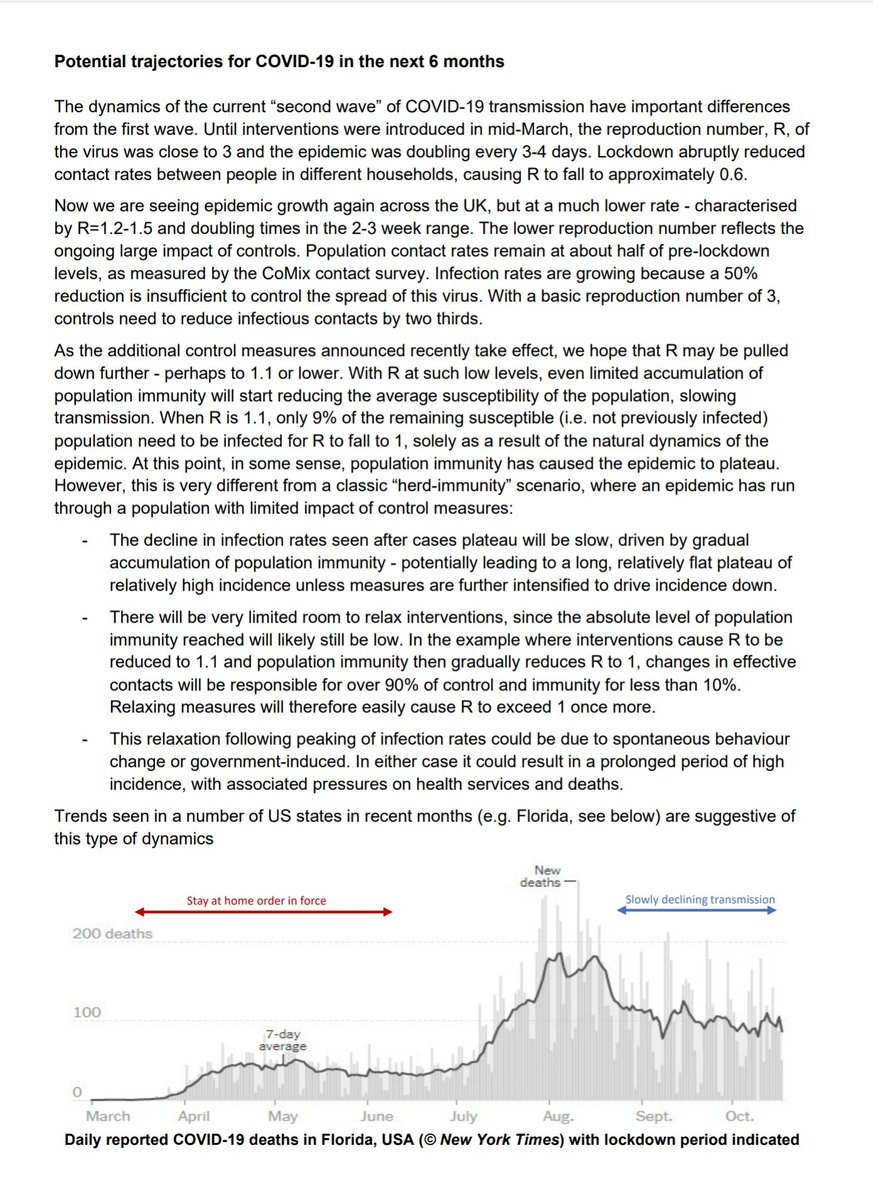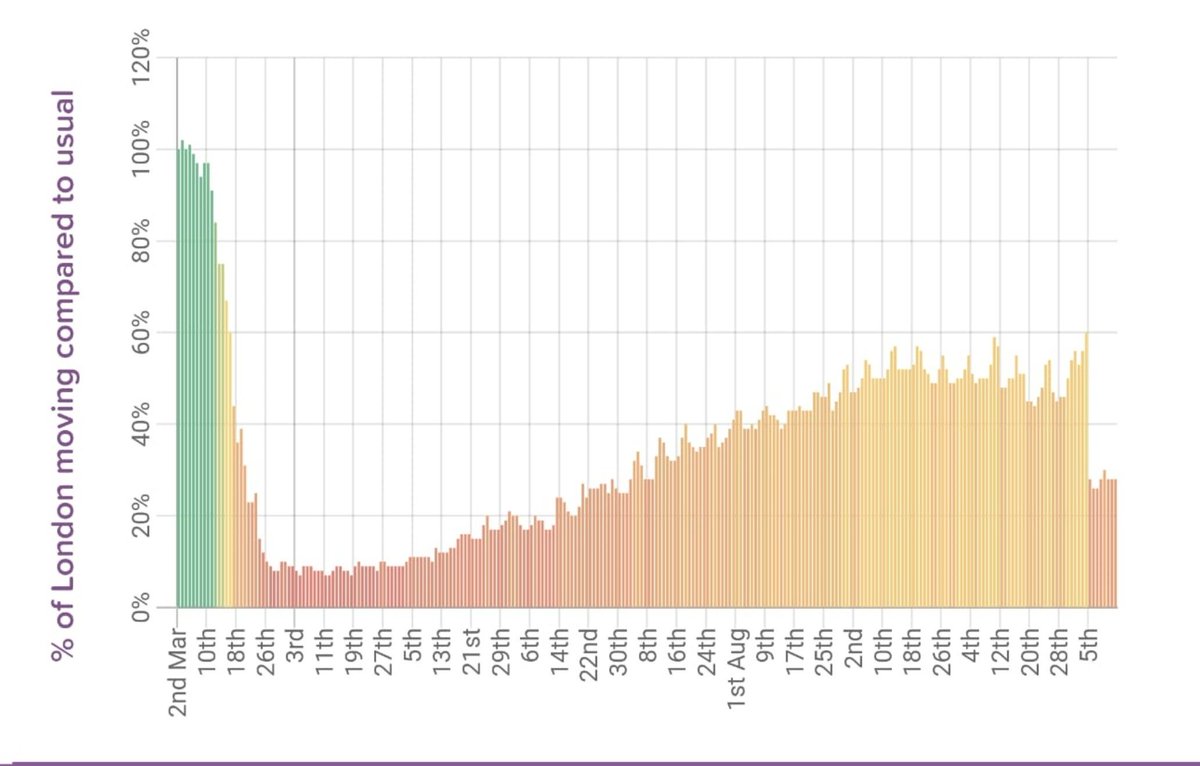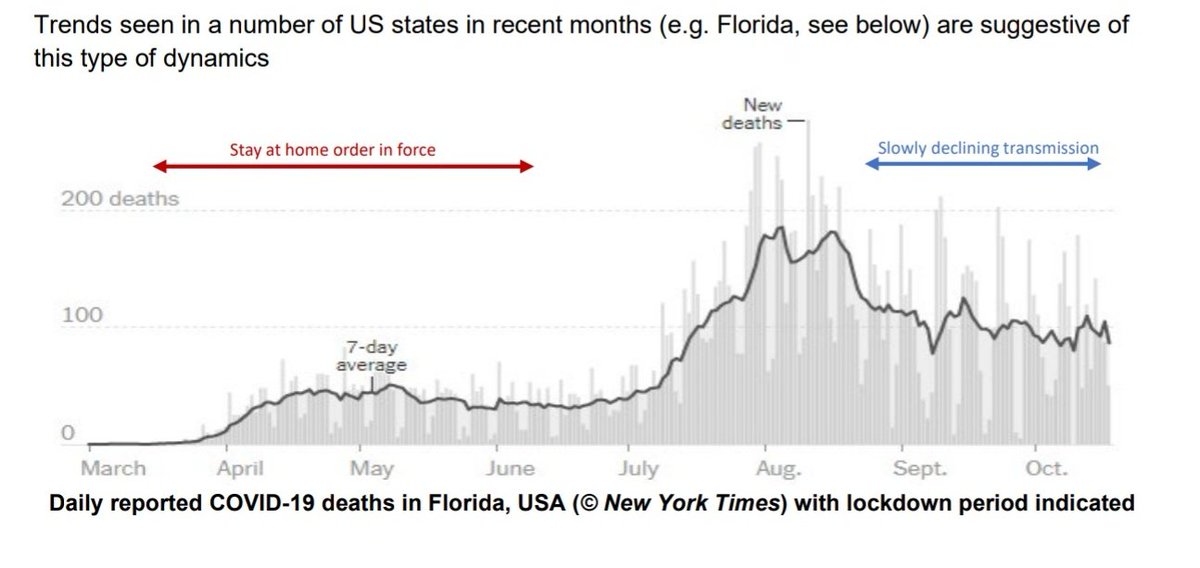Yesterday SAGE released a one-page document called "potential trajectories for covid-19 in the next six months"
It's not going to brighten your day, but it's one of the best summaries of where we are and where we're heading
Some notes
It's not going to brighten your day, but it's one of the best summaries of where we are and where we're heading
Some notes

1. The “first” and “second” waves are very different
The second is growing much slower because of the impact of social distancing. Before this lockdown, contact rates were about half of pre-lockdown levels
But that's still not low enough.
The second is growing much slower because of the impact of social distancing. Before this lockdown, contact rates were about half of pre-lockdown levels
But that's still not low enough.
2. Social distancing needs to be very extensive
SAGE: “With a basic reproduction number of 3, controls need to reduce infectious contacts by two thirds”
For a rough sense of what they means in practice, here's a chart of movement in London. It's been above 33% since June
SAGE: “With a basic reproduction number of 3, controls need to reduce infectious contacts by two thirds”
For a rough sense of what they means in practice, here's a chart of movement in London. It's been above 33% since June
3 – If we're not meeting people, immunity CAN play a role
SAGE: “When R is 1.1, only 9% of the remaining susceptible (i.e. not previously infected) population need to be infected for R to fall to 1”
(According to the most recent official figures, R is about 1.1 now)
SAGE: “When R is 1.1, only 9% of the remaining susceptible (i.e. not previously infected) population need to be infected for R to fall to 1”
(According to the most recent official figures, R is about 1.1 now)
4. BUT this isn’t the same as herd immunity. It only has an effect *because* of social distancing
Imho, this could help explain what’s happened in London. Movement has been lower there than in other cities so immunity could be playing a role at the margins
Imho, this could help explain what’s happened in London. Movement has been lower there than in other cities so immunity could be playing a role at the margins
5. Without true herd immunity, there’s v. limited space to relax social distancing
If R is 1.1 and immunity reduces it to 1, SAGE reckons that "changes in effective contacts will be responsible for over 90% of control and immunity for less than 10%”
If R is 1.1 and immunity reduces it to 1, SAGE reckons that "changes in effective contacts will be responsible for over 90% of control and immunity for less than 10%”
6. Relaxing measures will push R above 1 again very quickly, and cases won’t just go away
SAGE: The “natural” path of the epidemic is “a prolonged period of high incidence, with associated pressures on health services and deaths"
SAGE: The “natural” path of the epidemic is “a prolonged period of high incidence, with associated pressures on health services and deaths"
SAGE illustrates this with a graph of deaths in Florida. What they're saying is: even though the peak has come down, without intervention deaths will likely remain at this fairly constant level for some time to come :(
Maybe this all feels very obvious. In a way, it is. But the conversation around immunity has become so... strained... it's hard to see its proper role. It has one, it's just relatively small compared to social distancing - and it's likely to stay that way for some time / END
Unrelated, except in the sense of thinking about trajectories: this looks great https://twitter.com/jepsts/status/1327633227742318598

 Read on Twitter
Read on Twitter




